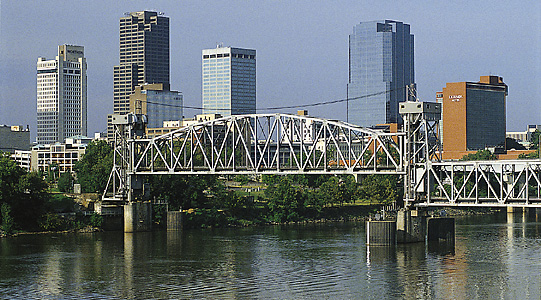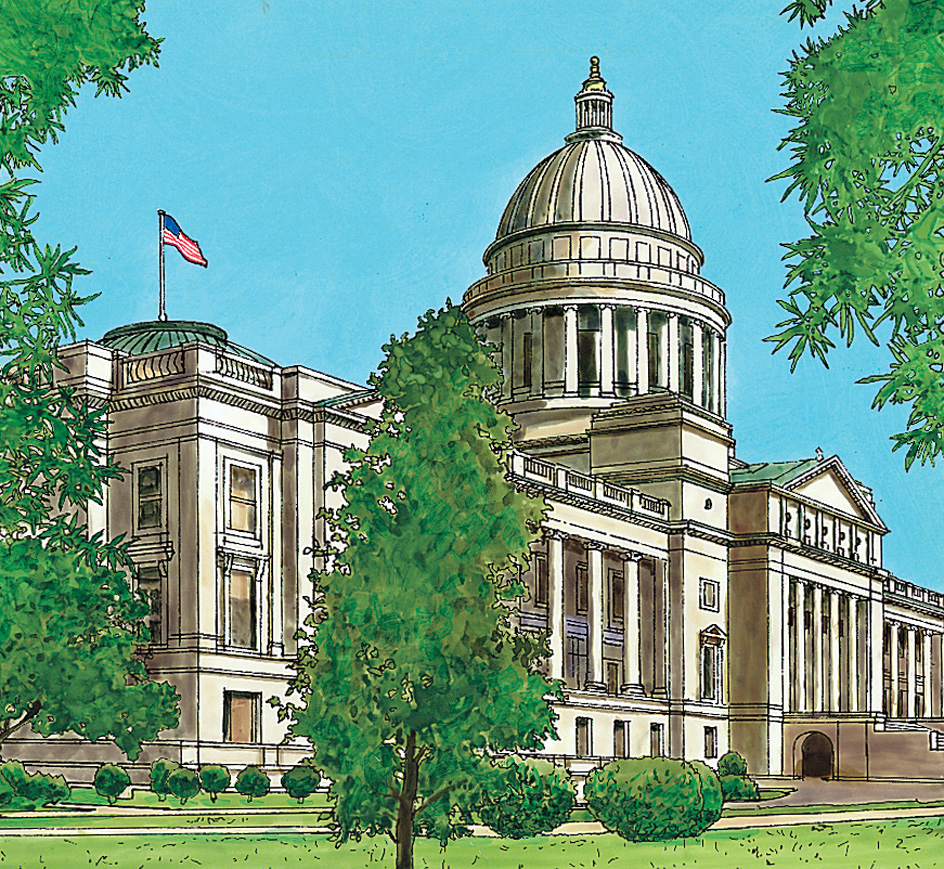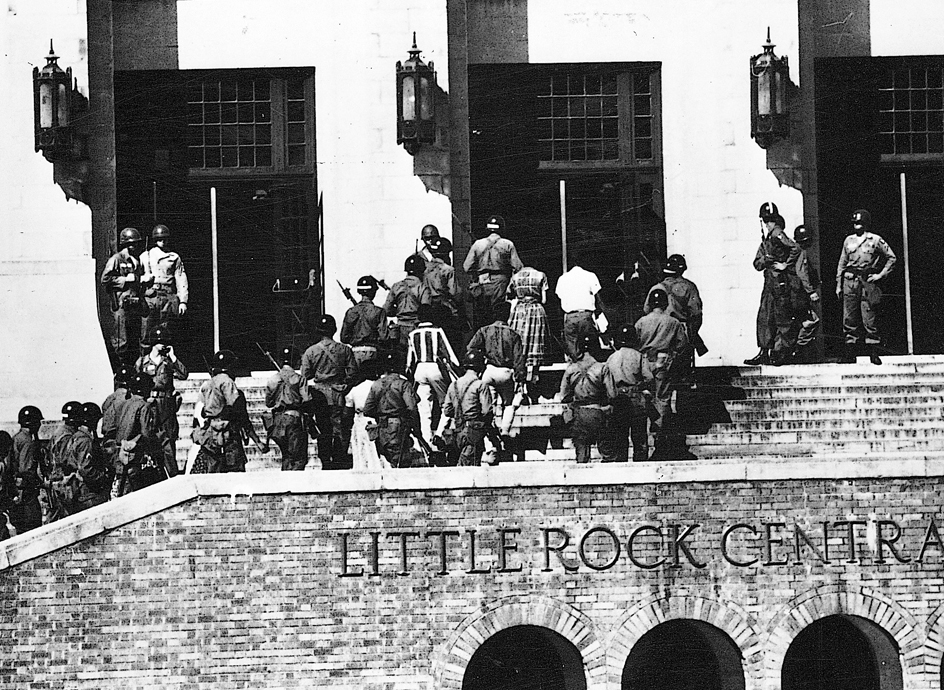Little Rock (pop. 202,591; met. area pop. 748,031) is the capital and largest city of Arkansas. It ranks as the state’s chief trading and transportation center. William Russell, a land speculator, established Little Rock in 1820. The site lay on the smaller of two rock bluffs that flank the Arkansas River. This bluff had been noted by the French explorer Bernard de La Harpe in 1722 and became known as petit roche, meaning little rock. A large boulder from the bluff now stands in Julius Breckling Riverfront Park, which spreads from downtown Little Rock to the Arkansas River.

Description.
Little Rock is the seat of Pulaski County. It covers 123 square miles (319 square kilometers) on the Arkansas River’s south bank, including 3 square miles (8 square kilometers) of inland water. North Little Rock lies across the river. Little Rock, North Little Rock, and Conway form a metropolitan area that covers 4,199 square miles (10,876 square kilometers) and consists of Faulkner, Grant, Lonoke, Perry, Pulaski, and Saline counties. 
The central business district of Little Rock has an interesting mixture of historic and modern buildings. It includes Historic Arkansas Museum, a city block with restored homes that date back to the early 1800’s. The first State Capitol, built in the 1830’s, also stands in downtown Little Rock. The present Capitol was completed in 1915. It is near the downtown area of the city.
In 1969, Little Rock University merged with the University of Arkansas system to form the University of Arkansas at Little Rock. Other schools include Arkansas Baptist College and Philander Smith College. The state operates schools for the deaf and the blind in Little Rock. The Arkansas Museum of Fine Arts and the Museum of Discovery, a science and history museum, are downtown. The William J. Clinton Presidential Center stands on the riverfront.
Little Rock is the home of the Arkansas Symphony Orchestra and Ballet Arkansas. War Memorial Park has a 33-acre (13-hectare) zoo. The Arkansas State Fair takes place in Little Rock in October. Little Rock Air Force Base lies northeast of the city.
Economy.
Service industries and manufacturing are important to Little Rock’s economy. Service industries include wholesale and retail trade, government activities, health care, and finance. The Little Rock metropolitan area has several major hospitals. Little Rock is Arkansas’s financial center. Chief manufactured products include data transmission equipment, valves and pipes, aircraft, and sporting ammunition. Little Rock is a main market in Arkansas for cotton, rice, and soybeans. The city is also one of the state’s chief ports.
Railroads provide freight and passenger service to Little Rock. Airlines use Bill and Hillary Clinton National Airport, near downtown.
Government.
Little Rock has a council-manager government. Voters elect the mayor and the 10 other members of the Board of Directors to four-year terms. The board hires a city manager to carry out policies established by the group.
History.
The Quapaw Indians lived in what is now the Little Rock area before white explorers first arrived there. In 1820, the legislature of the Arkansas Territory chose Little Rock as the territorial capital. About 50 people lived there. The town became the territorial capital in 1821 and the state capital in 1836, when Arkansas achieved statehood. Little Rock’s location on the Arkansas River and its role as capital led to its growth as a trading center. By 1860, it had a population of 3,727. After the American Civil War began in 1861, Confederate troops occupied the Army post at Little Rock and used the city as a supply center. Federal forces captured the city in 1863.

After the war ended in 1865, Little Rock prospered as a cotton and lumber market and as Arkansas’s chief center of trade. By 1900, its population had grown to 38,039. Little Rock grew steadily during the first half of the 1900’s, and its population reached 88,129 by 1940. After World War II ended in 1945, increased industrialization and government employment brought further growth. By 1960, the population had grown to 107,813.
In 1957, Governor Orval E. Faubus attracted worldwide attention to Little Rock when he tried to prevent integration of the city’s Central High School (see Arkansas [The mid-1900’s]). Completion of a federal navigation project on the Arkansas River in 1968 enabled barges to reach Little Rock. As a result, the city became an important port on the McClellan-Kerr Arkansas River Navigation System. Since the 1960’s, the city’s population has continued to grow, reaching 202,591 by 2020. In 1982, Little Rock completed a convention center and hotel complex overlooking the river. The 40-story Capitol Tower (now Simmons Tower) office building opened in 1986. It is the state’s tallest building.

In 1998, construction began on an 18,000-seat arena along the Arkansas River in the downtown area. It was completed in 1999.
For the monthly weather in Little Rock, see Arkansas (Climate).
See also Little Rock Nine.
